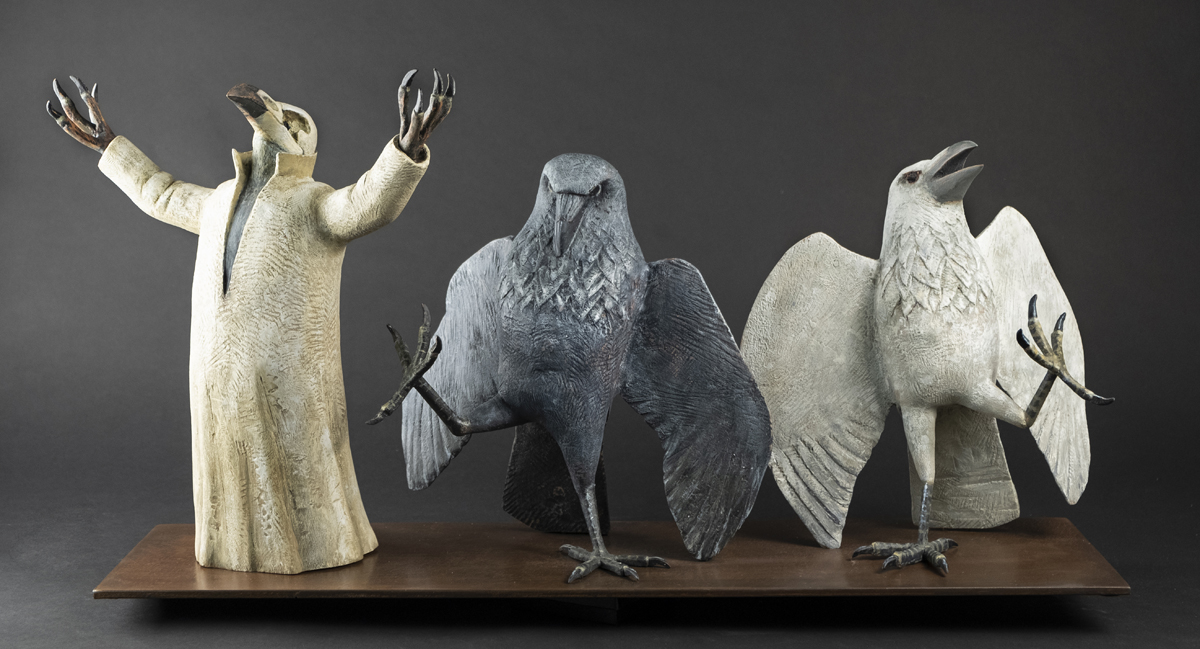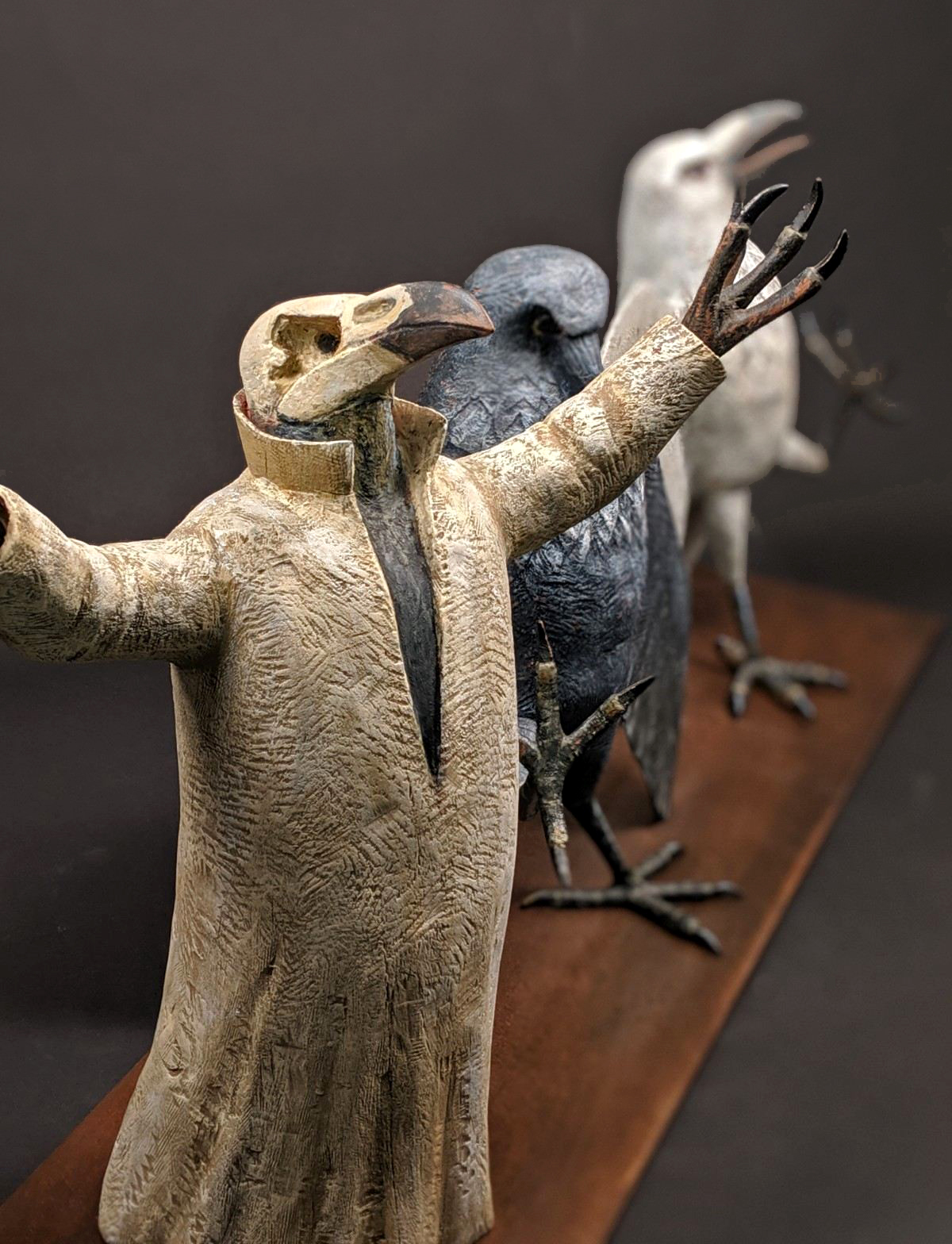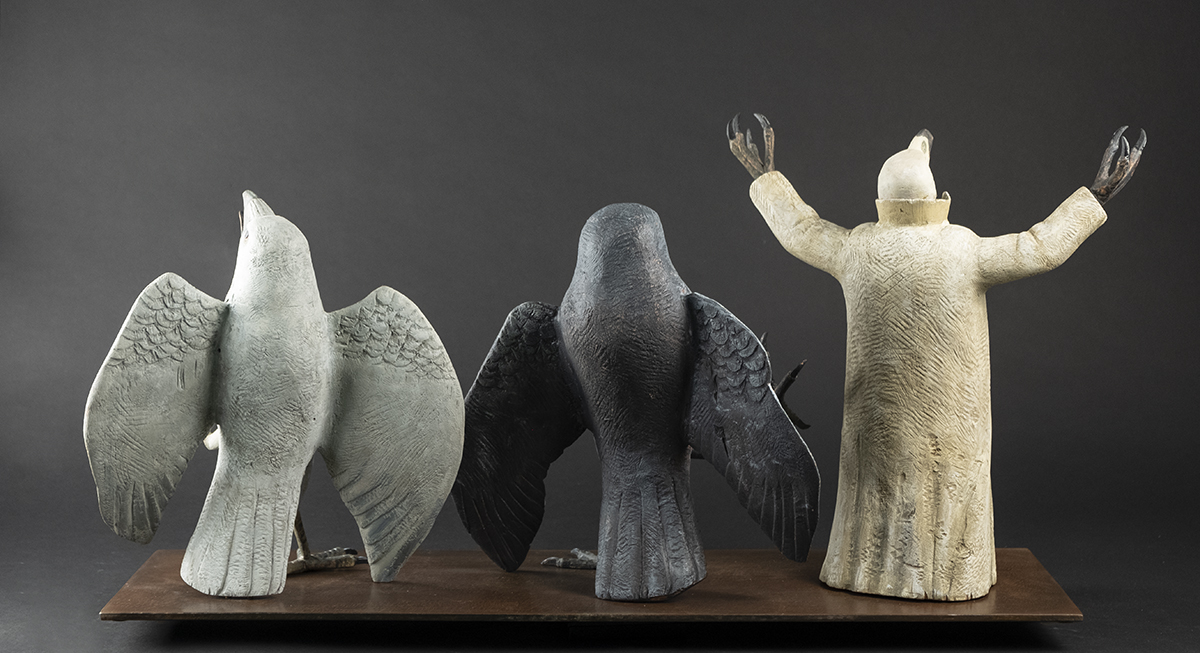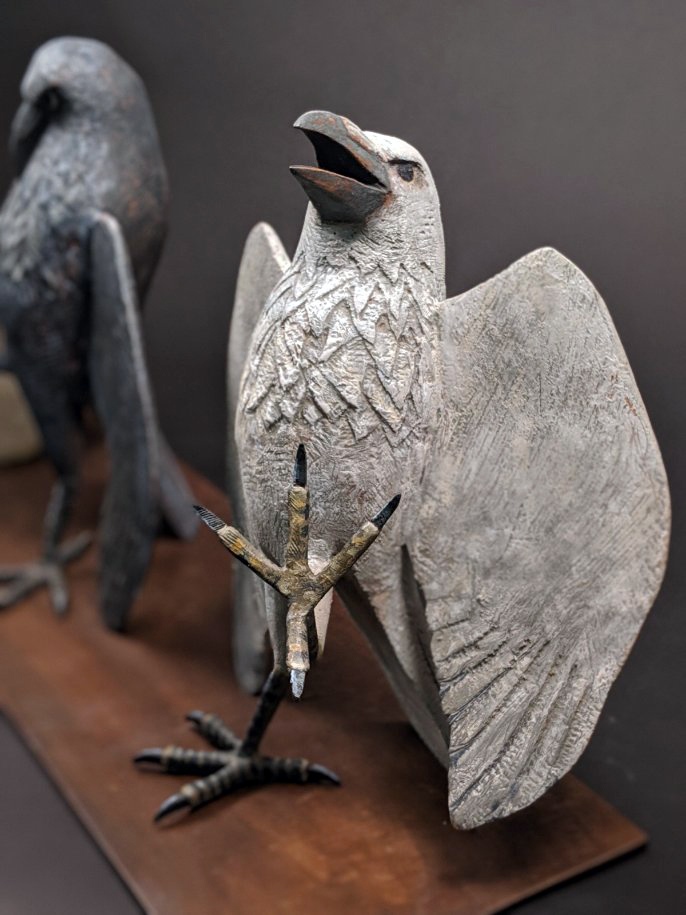The Dance
EXHIBITION:
Hib Sabin: The Still Point of the Turning World
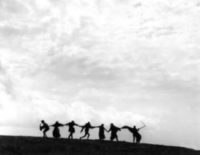
This signature work for the exhibition draws inspiration from multiple sources. One of the strongest is the costume, artwork and accounts that come to us from the eras of the Bubonic (or Black) Plague, and the works of film and visual art that are continually created in its wake. In the 14th century a particular wave of plague killed off 60% of the European population. Death was seen was the great human equalizer, carrying off both King and serf. In artwork of the time, Death was pictured as a skeleton or in human form, coming to spirit his “victim” away, and was often portrayed as wearing the garb of the intended victim. The woodcuts of Hans Holbein depict Death dancing and cavorting as it does its work.
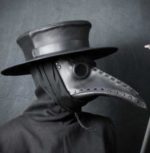 Ingmar Bergman’s 1957 film “The Seventh Seal” depicts a knight returning from the Crusades, and throughout the film he plays a game of chess with Death for his life. The final scene of the movie shows the Dance of Death, the image that inspires my own “Dance”. The Master of the Dance, the skeleton-raven on the left, is inspired by the iconic Plague Doctor masks that were worn largely in Italy and France through the 1600s.
Ingmar Bergman’s 1957 film “The Seventh Seal” depicts a knight returning from the Crusades, and throughout the film he plays a game of chess with Death for his life. The final scene of the movie shows the Dance of Death, the image that inspires my own “Dance”. The Master of the Dance, the skeleton-raven on the left, is inspired by the iconic Plague Doctor masks that were worn largely in Italy and France through the 1600s.
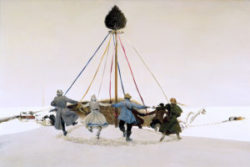
Another source for this work is the painting “Snow Hill” by Andrew Wyeth. It portrays figures dancing around a Maypole in the dead of winter. The participants are all models used by Wyeth in his paintings, but all had passed away by the time the painting was created. Wyeth stated that they were dancing gleefully in anticipation of his own death, so that he could join them; one of the maypole ribbons is unoccupied, and waiting for his arrival. The exaggerated movements of the dancers inspired the poses of the dancing ravens in my own “Dance”.
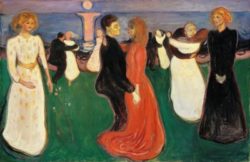
“The Dance of Life” by Edvard Munch depicts the stages of life: the young women on the left in white represents the virgin, the intertwined couple in the center to me symbolizes the ‘still point’, while the old woman on the right in black is symbolic of the crone. The ‘still point’ comes from a line from T.S. Eliot, “At the still point of the turning world. Neither flesh nor fleshless; Neither from nor towards; at the still point, there the dance is,“. I consider this metaphysically: think of a spinning sphere, like a globe. This is the moving world. Draw an equator across the sphere: that bisection represents linear time. Now, set the sphere on a spindle, or an axis, and that vertical line goes clean through: this is eternal time. At the point inside the sphere where eternal time and linear time, that is the still point. Like the still hub of a moving wheel, neither moving nor stationary, all temporal time collapses into this point. This is where the dance is. In my “Dance” the ravens are neither still nor moving–they are eternally present; they are frantic, yet calm.
-Paraphrased from Hib Sabin, 2019.


